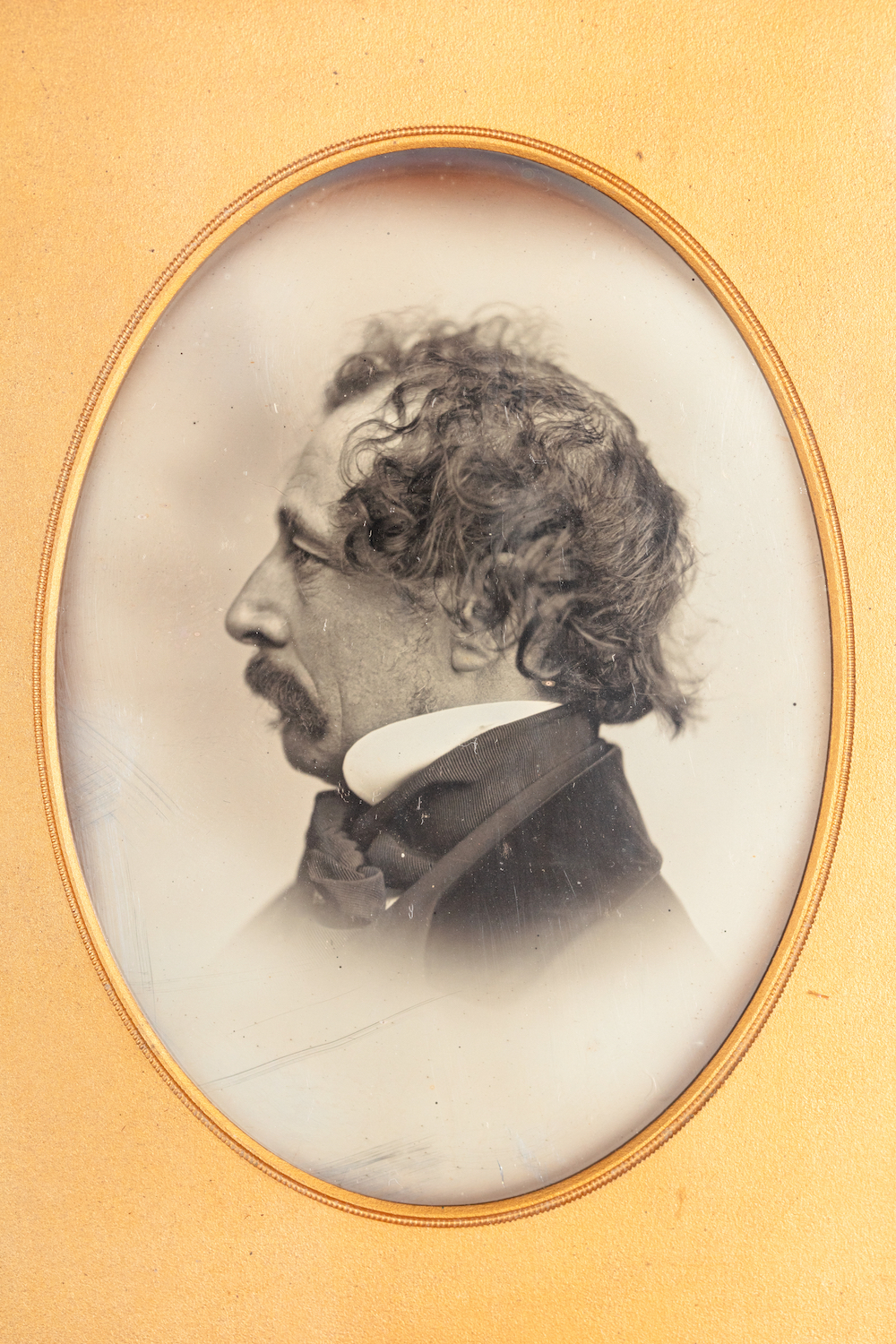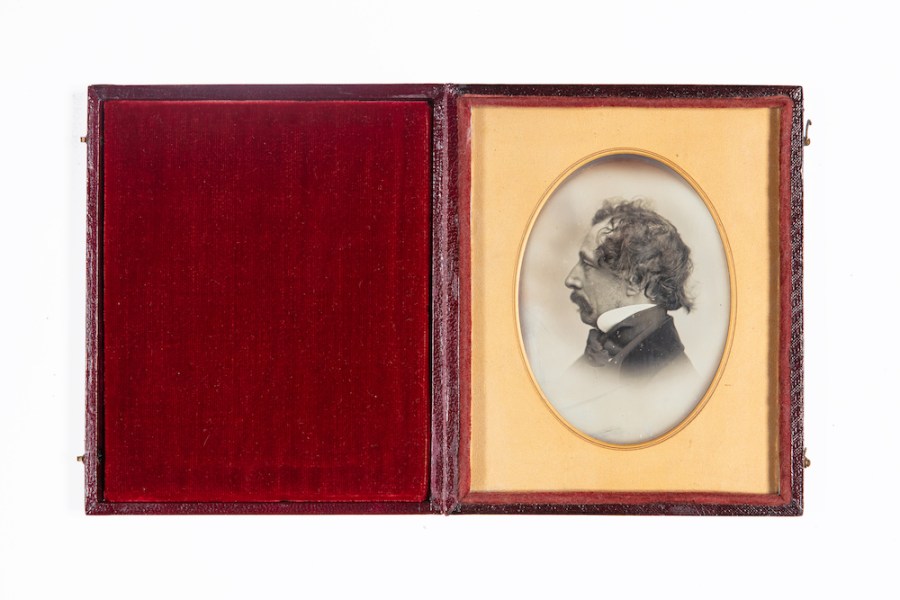An ‘extremely rare’ daguerrotype portrait of a moustachioed Charles Dickens (who usually sported a trademark beard) is now on display for the first time ever at the Charles Dickens Museum, which is housed in the only surviving London home that the author owned.
The daguerreotype profile portrait of Dickens was made between 1852-55 (the years when he was writing Bleak House and Hard Times), by the photographer John Jabez Edwin Mayall at his studio at 224 Regent Street, London. The picture, which measures just 95x70mm and is housed in a Morocco leather folder, was gifted to the Charles Dickens Museum by a private collector in 2021. Prior to this, the picture had been in a private collection for 20 years, after its rediscovery in the collection of a reclusive Irish photography enthusiast, Charles Cloney. The exceptionally sharp, detailed image will be on display for a limited time, until 31 March 2022, in order to ensure its conservation for possible future use or display.
‘Crayon’ daguerrotypes
While Dickens is believed to have sat for several daguerreotype portraits in the mid-1850s, very few images from those shoots have survived. In 1851, John Jabez Edwin Mayall had presented the idea of ‘Crayon’ daguerrotypes at the Great Exhibition in the Crystal Palace, Hyde Park, London – this technique covers the centre of the image with ‘blackened zinc’ before the whole image is exposed to light, wiping out all details except for those protected by the zinc. The technique produced highly detailed images and in the Mayall portrait, Dickens’s tousled hair, broad moustache and the individual lines around his eyes and mouth and on his forehead are vividly reproduced.

The rare daguerrotype portrait of Charles Dickens sporting a moustache. Image: John Jabez Edwin Mayall/courtesy Charles Dickens Museum
It is thought that Dickens first grew a moustache around 1844. In a letter to his friend, artist Daniel Maclise, he wrote, ‘The moustaches are glorious, glorious. I have cut them shorter, and trimmed them a little at the ends to improve their shape. They are charming, charming. Without them, life would be a blank.’ On learning that his brother Fred had grown a moustache, Dickens wrote to his wife Catherine, ‘He has a moustache … I feel (as the Stage Villains say) that either he or I must fall. Earth will not hold us both.’
Mayall sitting
In an 1852 letter to his friend, philanthropist Angela Burdett-Coutts, Dickens mentioned sitting for a Mayall portrait, ‘I am happy to say that the little piece of business between the Sun and myself, came off with the greatest success… I am disposed to think the portrait, by far the best specimen of anything that way, I have ever seen.’ In 1853, Dickens’ weekly magazine, Household Words, published an article on the daguerreotype process, drawing on a visit to Mayall’s studio for its detail.

The Morocco leather cover of the portrait folder that houses the rare Charles Dickens portrait. Note the London addresses of photographer John Jabez Edwin Mayall. Image: John Jabez Edwin Mayall/courtesy Charles Dickens Museum
Emily Smith, the curator at the Charles Dickens Museum, explained, ‘A moustachioed Dickens is hard to find! While his bearded visage in instantly recognisable, Dickens’s early experiments with face furniture are far less well recorded and evidence is scarce. Dickens was image-conscious, definitely a dandy; his public image was carefully crafted and presented and portrait sittings, though not always enjoyed, were not taken lightly.’
Daguerrotype was the first commercially successful photographic process (1839-1860) in the history of photography. Named after the inventor, Louis Jacques Mandé Daguerre, each daguerreotype is a unique image on a silvered copper plate. To make the image, a ‘daguerreotypist’ would polish a sheet of silver-plated copper to a mirror finish, treat it with fumes that made its surface light sensitive, expose it in a camera for as long as judged to be necessary, make the resulting latent image on it visible by fuming it with mercury vapour, remove its sensitivity to light by liquid chemical treatment, rinse it, dry it and then seal the easily marred result behind glass in a protective enclosure.
The Charles Dickens Museum is at 48 Doughty Street, Dickens’s only surviving London house, where he wrote Oliver Twist and Nicholas Nickleby, completed The Pickwick Papers and began Barnaby Rudge. The museum is open from Wednesdays to Sundays, from 10am to 5pm, last entry at 4pm. To discover more go to: Welcome to the Charles Dickens Museum
Related articles:
Inside story: the Duchess of Cambridge’s 40th birthday portraits
‘Forgotten’ photographer’s Victorian archive surfaces
Photographer’s rare Victorian images exposed
Edward Reeves Studio: inside the world’s oldest photographic studio







